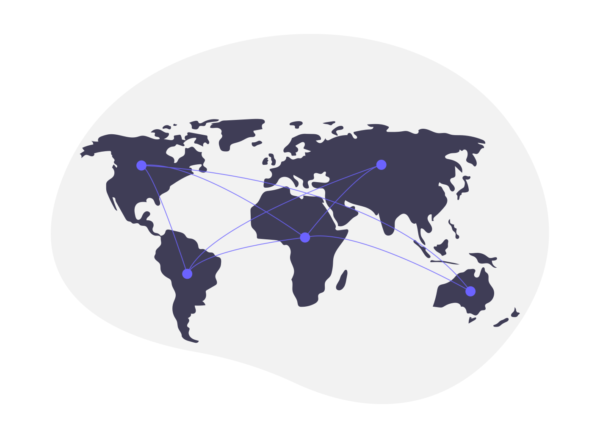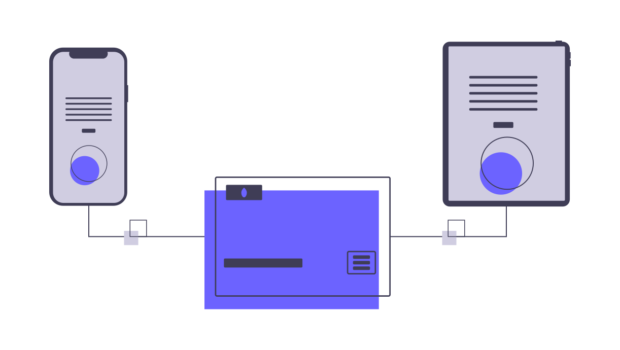The Growing Proxy And VPN Market
This post will discuss the growing need for proxies and VPNs, the booming IPPN industry, and the factors responsible for such growth recorded by IPPN providers.
Overview: Proxies and VPNs

Proxies are private servers that act as a stand-in on behalf of client computers. Data requests to and from a website’s server pass through the proxy server to the clients’ PCs or mobile devices. A stand-in proxy server’s essence is to alter a device’s identity, i.e., its IP address and location, making it extremely difficult or impossible to intercept or traceback data traffic to the originating client’s computer.
VPNs function in the same way as proxy servers by channeling data traffic to and from a client’s computer through its server, thereby acting as a middleman server or a gateway, thus concealing a client computer’s IP address and location.
Although both proxies and VPN perform similar functions, both have specific features and functionalities that appeal to entirely different market segments.
In fact, both proxies and VPNs act as gateways for channeling users’ traffic, a proxy server does not encrypt users’ data traffic, but it has the advantages of speed and flexibility owing to its dynamic nature of automatically altering IP addresses within a given time frame. This makes proxies the best tool for data scraping since it enables web scrapers to get past ‘rate limits’ – an antibot mechanism set by websites to prevent data scraping.
On the other hand, VPNs are more secure than proxies since they encrypt users’ data traffic, making it preferable for users with a preference for security. Besides, a VPN client functions at the OS level.
Hence, it encrypts and channels all data originating from a client’s computer. A proxy works only at the application level, thus re-routing only data traffic originating from a specific app (bots in most instances) users choose to set up with a proxy server.
The Growing Proxy And VPN Market

Notably, proxy service providers are also known as Internet Protocol Proxy Network Providers (IPPN). Despite the growing popularity of IPPN providers, the proxy market is still in its nascent state, with IPPN providers recording 16.8% growth annually (Frost and Sullivan 2020).
This growth rate is projected to continue till 2025, with IPPN providers netting over $259.7 million annual returns from proxy service subscriptions by the end of 2025 (Frost and Sullivan 2020).
Conversely, the VPN industry recorded over $25 billion as revenue for the year ending 2019. It is projected that the VPN industry will grow at 12% annually from 2020 to 2026, generating revenue exceeding $70 billion by the end of 2026 (Global Market Insights, 2020).
IPPN And VPN Growth Market Drivers

The need to work from home securely
Following the aftermath of the COVID-19 pandemic, there’s an increased need for workers to work remotely from home in line with the stay-at-home order. This led to a growing need for workers to connect securely to workplace servers from home via proxy or VPN networks.
Additionally, there’s a growing need for proxies and VPNs to access entertainment and news media platforms like Netflix, Hulu, BBC iPlayer, Disney+, etc., by users outside of the geographical range of such service providers. This growing need for proxies and VPNs for work and entertainment purposes saw an astronomical increase in revenue generation in 2019.
The growing need to monitor competitors’ website performances
Since the age of website proliferation, companies have increasingly blocked competitor companies’ range of IP addresses to prevent them from accessing their website to scrape data for competitive analysis, price monitoring, etc.
To bypass such blockage and view competitors’ websites the way a customer would, more companies are increasingly subscribing to proxy services. As earlier mentioned in the overview, proxies alter a device or network’s IP address and location to bypass geographic or IP address blockage. Hence, companies can view and monitor competitor’s websites for key performance indicators and analysis using a proxy or VPN server.
The increasing need for data gathering
There’s the need for data gathering, commonly referred to as crawling, web scraping, or indexing for analytic purposes like indexing by search engines, weather forecasting, pricing analysis, academic and research purposes, etc. This has led to the automation of data gathering processes using automated scripts commonly referred to as bots, web crawlers, scrapers, or web spiders.
According to Distill Networks, the activities of bots are estimated to have generated an estimated 40% of the internet traffic in 2018. Due to the humanly impossible rate at which bots generate requests from websites, companies use antibot mechanisms to set rate limits, ban or prevent bot activities on their websites. This has led to the growing need for bot users to use proxies to bypass websites’ antibot mechanisms.
The use of automation tools by social media users to grow their audiences
Social media platforms are fast becoming marketing platforms of choice for marketers due to the tremendous amount of traffic generated by social media platforms like Facebook, Twitter, Instagram, Pinterest, etc.
Therefore, both marketers and social media influencers use social media automation bots to engage with social media users and build large followership across social media platforms for increased exposure.
However, social media platforms have strict policies against bot usage and multiple account creation. This has created a growing need for marketers and social media influencers to use proxy services to disguise bot usage as well as prevent multiple account bans.
The need to prevent advertising frauds and malpractices
The advertising company generates billions of dollars from adverts. This has also led to increased advertising malpractices by fraudulent advertising companies who use diverse tactics to create false impressions of tremendous traffic generation to the company’s website or divert advertising traffic from ad servers. These fraudulent malpractices have a severe negative implication on the company.
Hence, by using IPPN to simulate customer devices, companies can monitor advertising companies to experience first-hand how their ads are displayed to customers and also prevent advertising fraud.
The Future Of The Proxy And VPN Market

Due to the increasing demands for proxies, it is ideal that proxy service provider should step up with their offerings to woo customers.
The proxy and VPN industries occupy a smaller portion of the Total Available Market, which comprises cybersecurity, data collection, account management, fraud protection, brand protection, application performance, ad verification, talent sourcing, etc.
At 16.8% and 12% annual growth rate; it is hopeful that both IPPN and VPN service providers will increase their market share as more individuals and companies realize the importance of proxies and VPN in the areas of cybersecurity, data gathering and modeling, privacy protection, and anonymity, market analysis, and monitoring, etc.
















